Simple Green Thumb Tips And Tricks To Make Your Garden Flourish
If you enjoy gardening, you’ve probably experienced the joy of harvesting your first crop or blossom. But you’re also aware of how difficult it can be to grow plants. While trying to get your very first bumper crop, you’ll have to battle everything from pests to weather conditions to acidic soil as a gardener.
It can also be a bit of a costly venture. Tools, pots, seeds, fertilizer, weeding supplies, and structural supports are all must-buys for gardeners. All of that costs money, even if it pays off in the long run. However, that’s where gardening hacks come into play. These tricks can help you care for your plants in a more economically or environmentally friendly manner.
So, where do you begin? With these 40 gardening secrets that every gardener should know!
Milk Jars Can be Designed into Watering Cans
You can puncture the top of a milk jar to create a watering can if you choose not to spend money on a factory-made watering can. It’s perfect for watering your plants in a more environmentally friendly manner.
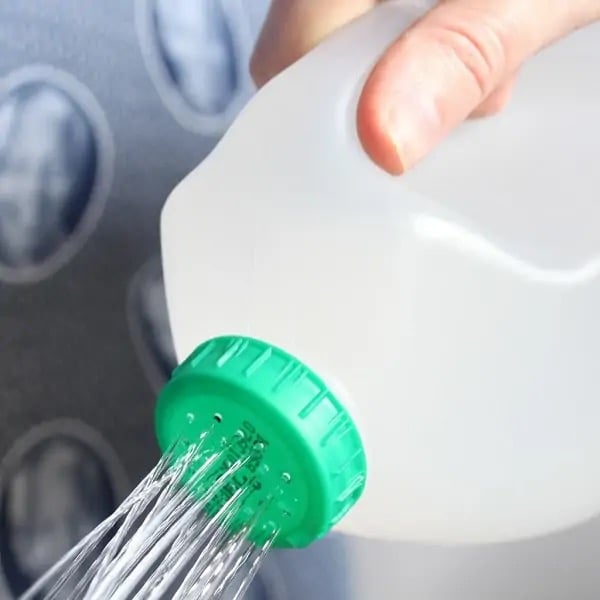
Source: A Journey to a Dream
Make holes in the lid to use as a watering can on the fly! For example, heat a needle and poke holes in the cover of an old plastic milk jug to allow water to flow through it to create a new design.
Toilet Paper Rolls as Biodegradable Planters
It is unnecessary to use plastic planters when you can utilize a more environmentally friendly alternative. Everyone has a couple of rolls of toilet paper on hand at any one time. Preserve these items for your garden instead of throwing them away.
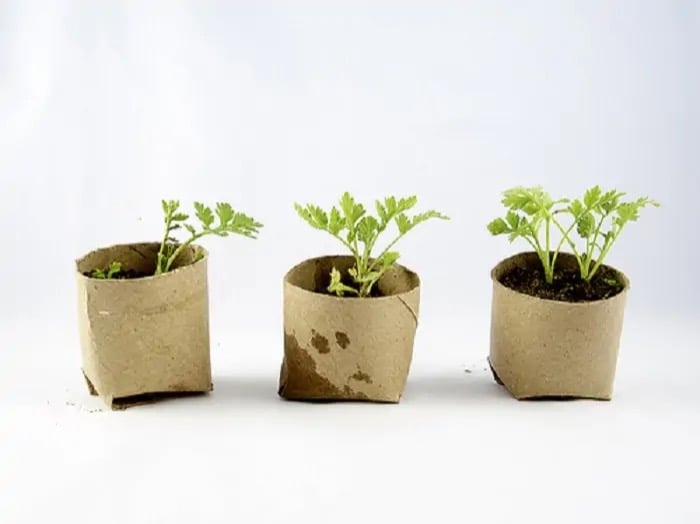
Source: Dunster House
Using a knife, cut the toilet paper roll in two. Make four cuts 1/3 of the way up the roll. Fold the bottom cut section in half as if closing a box. Prepare your seeds by filling your fresh, new seed pots with dirt.
Trash Bins Make Excellent Water Barrels
You might believe that making a rain barrel is too tricky. You can, however, create one yourself by attaching an ordinary trash can to your gutter. You can find simple guides to assist you with this endeavor on the internet.
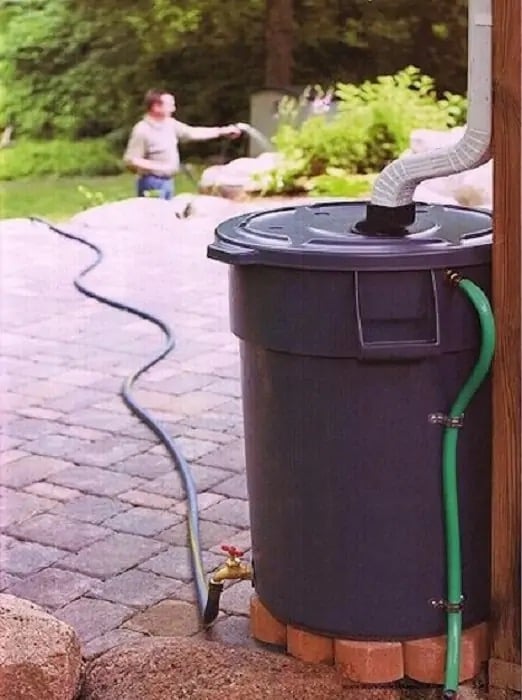
Source: Workbench Magazine
Rain barrels can be made out of trash cans, basic PVC pipes, and electrical connections. Stack up as many contraptions as you’d like in order to fulfill your water barrel needs. Then, place the drum near a downspout, drill a hole towards the bottom of the side, and screw in a drain valve.
You Can Use PVC pipes to Fertilize Dense Plants
Watering dense plants might be complex. Why? Because they have well-protected root systems that are tough to access. PVC pipe may be useful for helping to direct water to the roots.
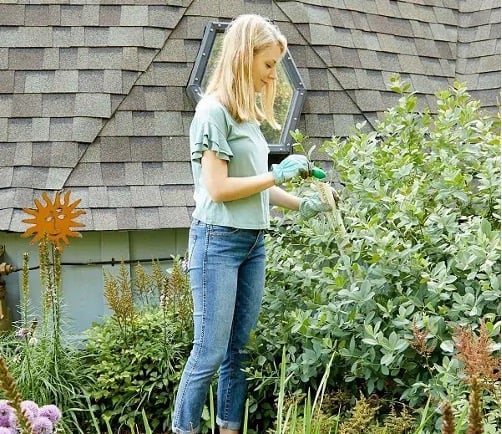
Source: The Family Handyman
Use a common PVC pipe. Pour the fertilizer into the pipe by sliding one end down to the plant’s base. To make a larger opening to pour in the fertilizer, cut the top of the tube at a 45-degree angle.
Mulching is Made More Accessible by Using a Small Container
Mulching is a tedious and time-consuming gardening activity, but it can be simple. Before you begin, transfer the mulch into a smaller container. It may appear to be a minor change, but operating from a bucket rather than a large bag can significantly differ.
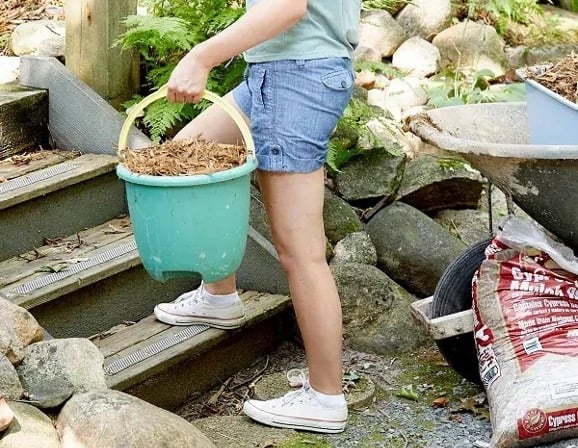
Source: The Family Handyman
It’s easier to get mulch up close to flowers and bushes if it’s in a tiny container. Fill your wheelbarrow with mulch by placing buckets and pails in it, and that should do the trick.
Fertilize Your Garden Beds with Epsom Salt
Epsom salt isn’t well-known nowadays for its home and garden applications. However, due to its high magnesium content, it is a highly effective fertilizer when used in proper quantities in the soil.
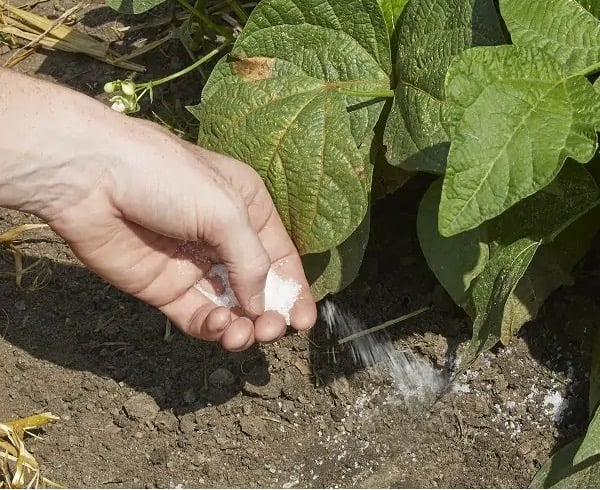
Source: The Family Handyman
Simply combine the necessary amount of Epsom salt with water and spray it on the leaves of plants or sprinkle the crystals on the garden bed to get the desired results.
You Can Quickly Redesign Your Yard After Your Plants are Mature
Many gardeners discover that once they are growing plants in the ground, they suddenly change their minds about arranging their yard.
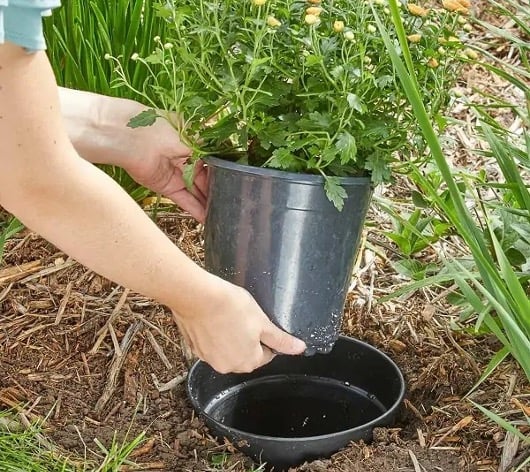
Source: The Family Handyman
However, you can easily transplant your plants by first placing them in separate planters and then placing them directly into the ground.
Use Kitchen Sponges to Keep Your Plants Hydrated
Do you have trouble keeping the bottoms of your planters hydrated and moist? Place a couple of kitchen sponges in the bottom for an incredibly simple trick. Water gathers near the root system as a result of this.
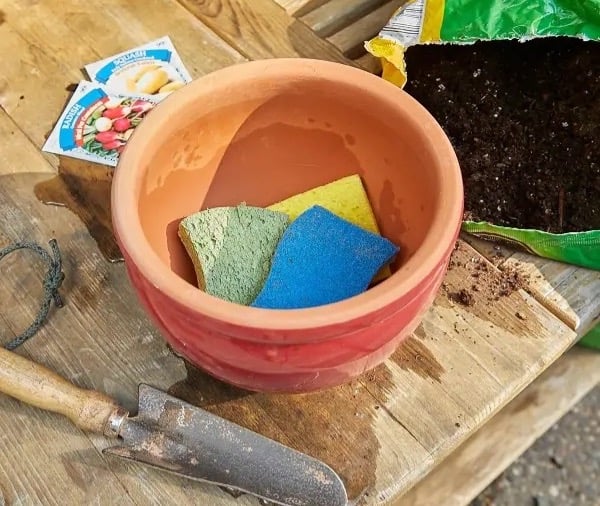
Source: The Family Handyman
The sponges help to maintain moisture while also providing sufficient air space. They also keep water from draining out of the bottom. The sponge functions as a reservoir for water, keeping the soil moist for longer.
Secure Your Climbing Plants Using Zip Ties
Climbing plants like tomatoes and ivy are lovely, but they occasionally require assistance to avoid collapsing on themselves and crushing their foliage.
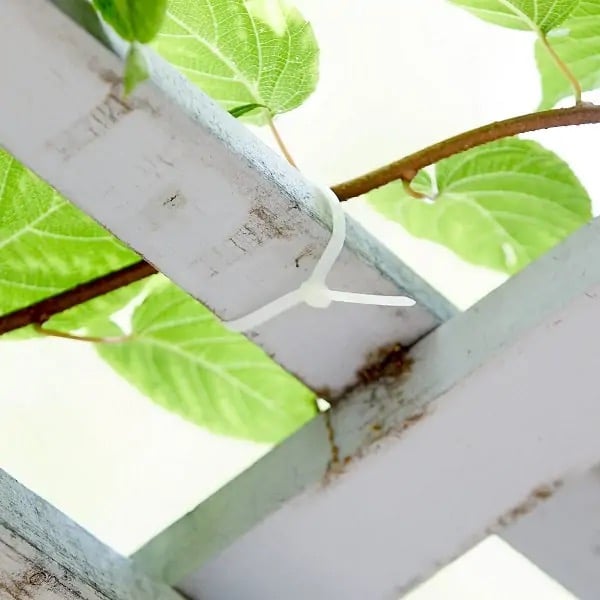
Source: The Family Handyman
It can be challenging to get your vines to run up the way you want them to. Fasten zip ties around the stalks and strap them to something firm to direct the vines. Don’t cinch the vines too much.
A Tarp is the Perfect Gardening Tool!
In the garden, a tarp is one of the most valuable things you may possess. It’s an excellent method for protecting plants or waterproofing structures and eliminating undesired plants. All that is required is that you place it on top.
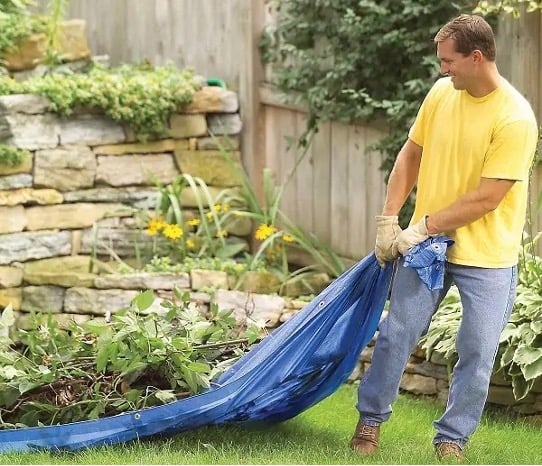
Source: The Family Handyman
A tarp can smother weeds before planting and discourage future weed growth in a garden bed. According to Fortier, the dark tint of the tarp absorbs heat and warms the soil. The tarp also has the additional benefit of improving the structure of the earth beneath it.
A Shoe Rack Will Make a Great Vertical Garden
Sometimes you might wish to grow a garden, but you just don’t have the necessary yard area available. The key is to build upwards rather than outwards — and this super-simple shoe rack makes it easy to accomplish just that.

Source: Instructables
Vertical herb gardens are becoming increasingly popular because of their ability to save space. For example, a cloth shoe caddy can provide numerous plants in a limited amount of vertical space.
Use Croquet Wickets for Keeping a Hose in Place
Do you have any old lawn games in the back of your closet? Croquet wickets, for example, can be used to tie your hose to the ground. This restriction guarantees it gets where it has to go while avoiding tripping anyone passing by.
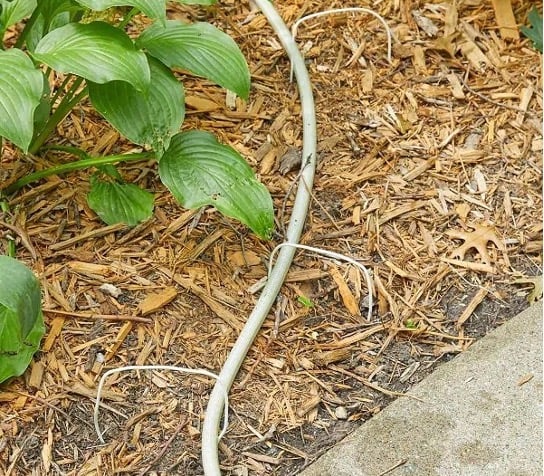
Source: The Family Handyman
Our flowers take a lot of work to plant, fertilize, and water. We drag the hose across the yard from time to time and accidentally take it across the garden, destroying your plants and flowers. A straightforward approach is to use the wickets from your croquet set to create a passage for the hose. Feed the hose through the entrances while watering to keep your plants and flowers protected.
Hydrogen Peroxide Can Help Protect Your Seedlings
Hydrogen peroxide is known for its ability to destroy an infection in a skin cut. It can, however, battle illness in the soil as well. So if you’re worried about your plants contracting diseases from the dirt, spray them with peroxide.
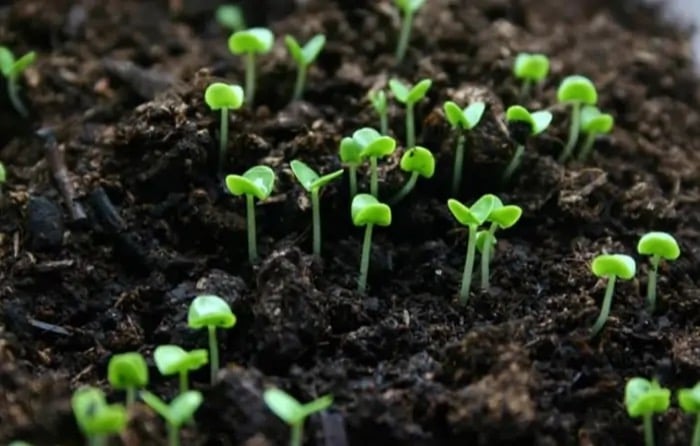
Source: Balcony Garden Web
When you add peroxide to the soil, it reacts with living and dead bacteria and organic debris. Thus, peroxide acts as the effective reagent in an older method for determining the amount of organic matter in the soil. As a result of this reaction, there is the production of oxygen disguised as bubbles.
Coffee Grounds For Keeping Pests Away
Coffee grounds aren’t necessary to keep, and you mostly throw them away anyhow, so why not sprinkle them around your flower beds? Slugs love to nibble on growing plants, and they’re a terrific way to keep them away.

Source: Balcony Garden Web
By distributing coffee grounds around your plants, you can keep unwanted pests away from your garden. In addition, they aid in the creation of a barrier that slugs and snails dislike crawling over.
Eggshells Also Keep Unwanted Pests from Your Garden
Use eggshells instead of coffee if you don’t drink coffee. They’re also effective insect deterrents, and they’re safe for the environment.
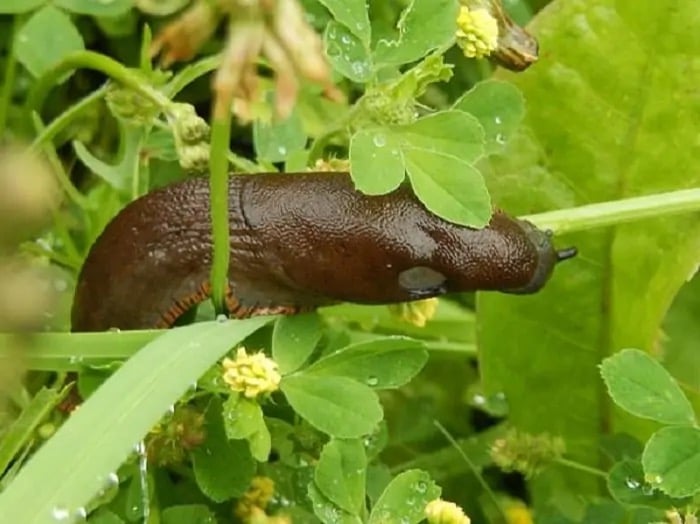
Source: Balcony Garden Web
For insect management, all you have to do is throw your empty eggshells through a food processor for a few seconds or roll them under a bottle or rolling pin. After that, sprinkle the eggshells around your garden in places where slugs, caterpillars and other crawling pests are an issue.
A Mailbox is a Great Gardening Tool Holder
Install a mailbox in your backyard if you want a convenient place to store your gardening tools that is also out of the way. It’s adorable, fashionable, and won’t look too out of place. It’s also a terrific technique to ensure that you can quickly locate all of your hand tools.
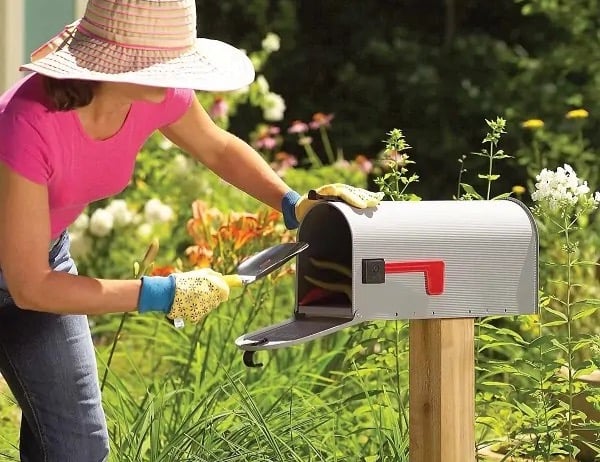
Source: The Family Handyman
Fill the mailbox with hand tools and a pair of gloves and place it right in the garden. This modest addition will save you time and money by reducing the number of accidental excursions to the garden shed to retrieve a misplaced trowel, weeder, or pruner. These brief bursts of diligent upkeep have a significant impact on the appearance of your garden. In addition, you can apply a coat of paint to the mailbox to make it both stylish and functional.
Cooking Water Can Serve as Fertilizer
Keep boiling water on the stove for veggies or eggs rather than pouring it down the drain next time you do so. Instead, put it to good use by watering your plants. It has the potential to be an excellent fertilizer for your plants.
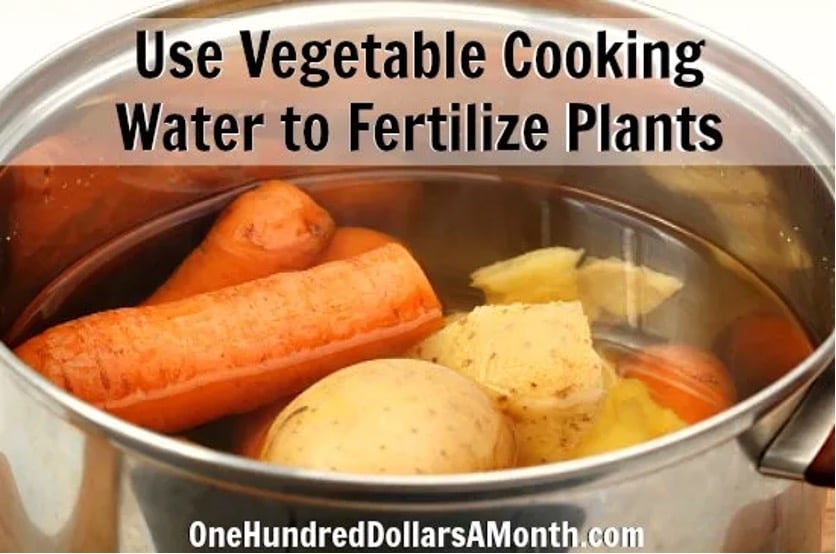
Source: onehundreddollarsamonth.com
Once the water cools, you can use it to “fertilize” your plants in your garden or planting containers rather than pouring this rich water out.
Pinch Your Garden Plants for Growth
An ancient proverb says that for your hair to grow, you have to cut it. It turns out that the same is true for plants as well. So to encourage thick and vigorous growth, pinch off the dead heads of your plants regularly.
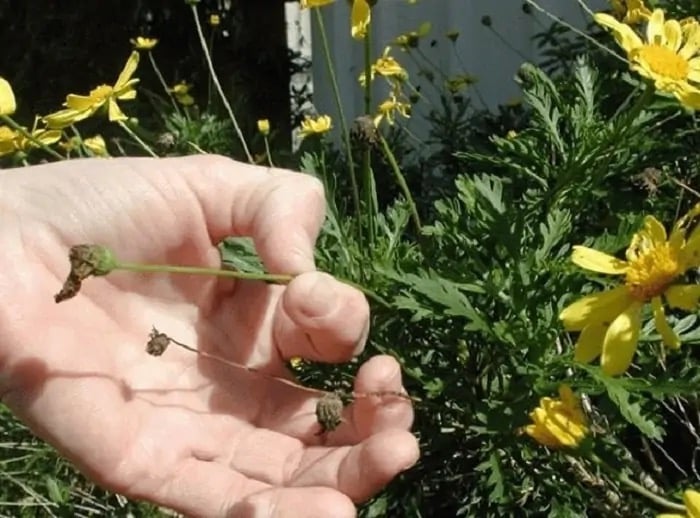
Source: Balcony Garden Web
Pinching is best on younger plants. Once your plant has established a few pairs of leaves on the stalk, it can be ready to be pinched. Experts recommend starting when you have at least two to three pairs of leaves before squeezing.
Transform Plastic Containers into Planters
Those plastic clamshell boxes you see at restaurants and salad bars are pretty helpful as storage containers. Planting seedlings in them is a terrific idea because seedlings require a small, warm, and moist environment to grow.

Source: The Family Handyman
A plastic clamshell box is an excellent choice for a planter because it is inexpensive and portable, enabling you to move it around your garden or patio as needed.
A Knife Prevents You from Damaging Your Plant Roots
Moving plants is difficult to work, and it is easy to injure the roots of plants when you remove them out of their pots. Instead of dragging down the sides of the pot, consider chopping down the sides with a standard knife. It will be much easier to free the plant without harming it if you do it this way.
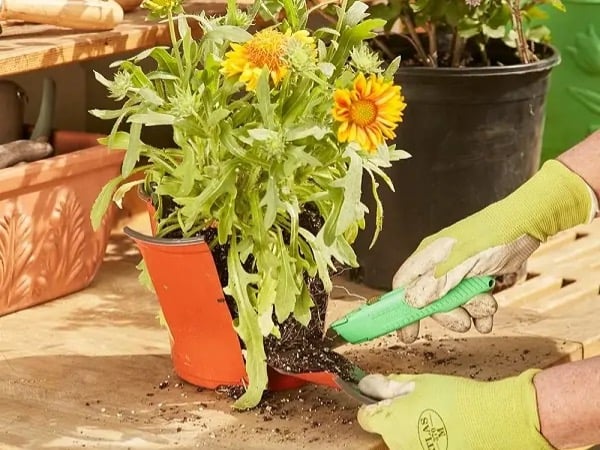
Source: The Family Handyman
Carefully cut the side of the container at two points from top to bottom, then pull down the cut piece, ensuring all the roots remain intact and ready to be replanted.
Cinnamon is a Disease Killer in the Soil
Cinnamon contains natural antifungal effects, in case you didn’t know. As a result, it’s an excellent solution for keeping your plants safe and healthy. Simply sprinkle it throughout your garden. You’ll love the cinnamon smell on your soil.
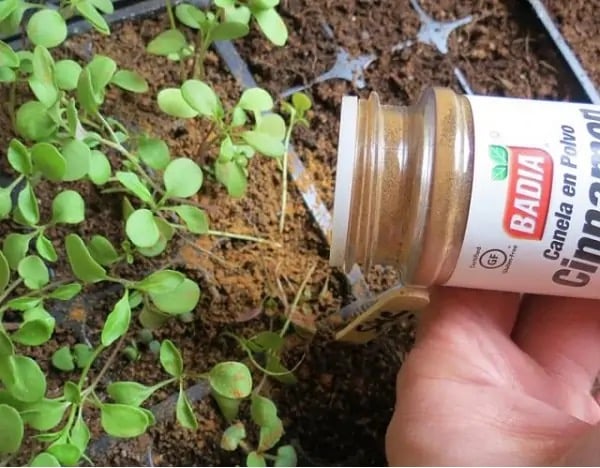
Source: Balcony Garden Web
As an alternative to willow-derived rooting powder or hormone-derived rooting powder, cinnamon is just as effective as an agent for rooting. All varieties of plants respond well to a single application of rooting hormone to the stem when planting or cutting.
Vinegar can Kill Weeds
You don’t need to use store-bought weed killers to get rid of those weeds once and for all. All you need is a little vinegar, which you most likely already have in your kitchen cupboard.
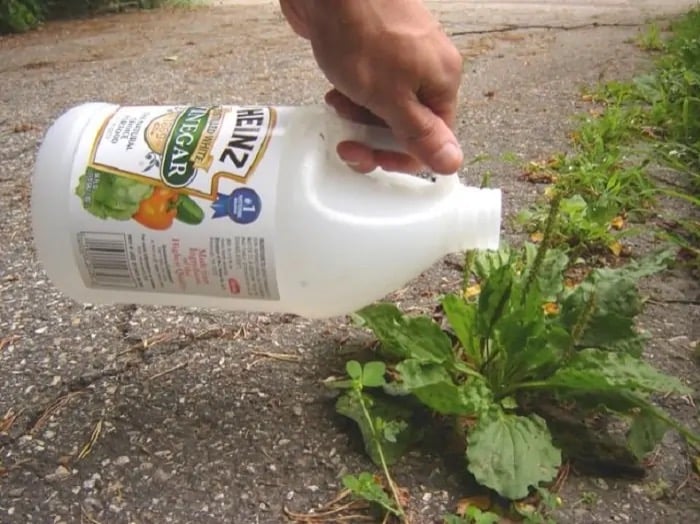
Source: Balcony Garden Web
Vinegar is a natural weed killer in organic farming. Vinegar’s acetic acid gives it the ability to kill weeds; the higher the acetic acid concentration, the more lethal it will be.
A Regular Wooden Board Can Help in Edging Lawns
Do you want to edge your lawn? As a guide, use a regular wooden board or post. To acquire the correct shape, all you have to do is set it down and follow it.
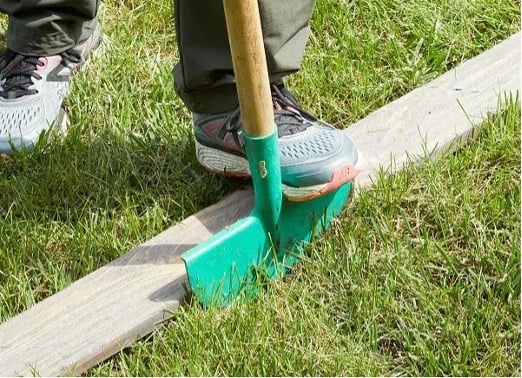
Source: The Family Handyman
Irregular edges make the garden look untidy and can prove to be problematic in demarcating points. A regular wooden block or board together with a shovel will give excellent results.
Plastic Forks are an Easy Technique to Prevent Garden Creatures
There is no need to harm deer or rabbits that like grazing on your garden plants, and there is no need to go through the hassle of erecting a fence to keep them out. Instead, reuse your old plastic forks by burying them upright in the dirt, and they will be discouraged from returning.
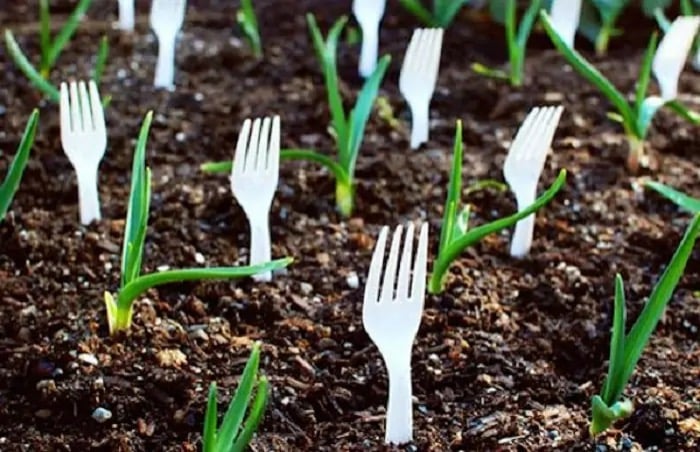
Source: Your House and Garden
After following the guidelines listed above, the plastic forks should effectively keep deer, rabbits, squirrels, and raccoons from raiding your crops. It’s also a low-cost way to keep your vegetables and fruits safe and protected.
Milk Jugs Can Act as Greenhouses for Seedlings
Are you fed up with your seedlings staying in the elements? A tiny greenhouse can emerge out of the top of a milk jug. It safeguards sensitive plants while providing a warm, wet climate that promotes their growth.

Source: MorningChorus.com
The best plastic greenhouses are a less expensive alternative to greenhouses. Still, they also offer their own set of benefits:
-They come in tiny sizes.
-They lengthen the growing season (particularly for early sowings).
-They can help you grow heat-loving veggies more successfully.
Use Newspapers to Suffocate Weeds
You may spend hours picking weeds out by the roots or simply smothering them. But, it turns out that it’s pretty simple. Merely cover the garden bed with newspaper, and they will wither.
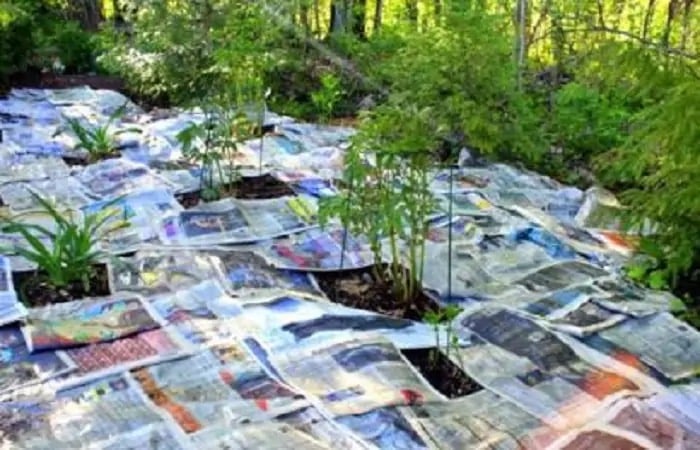
Source: destora.com
The newspaper will suffocate the weeds, but water and nutrients will still reach the flower bed. In reality, when the newspaper decomposes, it supplies nutrients to the soil and the species that live nearby.
Make a Watering Can out of a To-go Coffee Cup
Coffee cups on the fly are a perfect size and shape for watering houseplants. The hole in the top serves as an excellent spout, and most of us easily have access to these types of cups. Just make sure to rinse it thoroughly first.
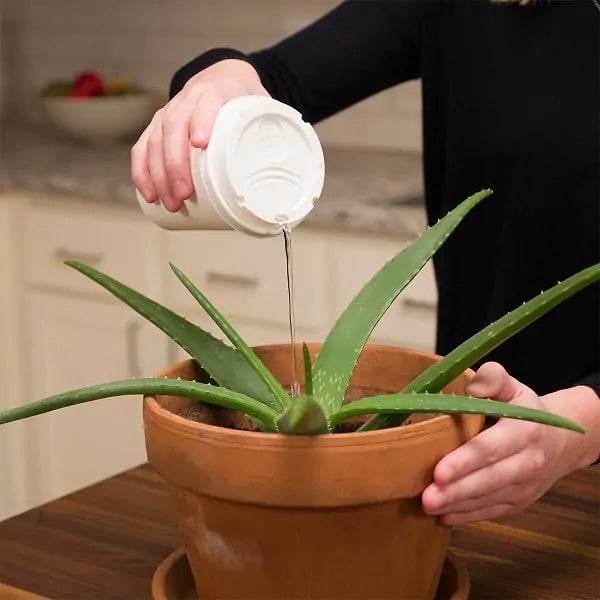
Source: The Family Handyman
This rapid watering can is perfect for plants that don’t require a lot of water, such as Aloe Vera and cacti. Alternatively, clean to-go coffee mugs with lids are usually readily available for office plants. Before using it as a watering can, make sure to clean the cup and lid properly.
A Posthole Digger Can Make Vegetable Planting Easier
Planting vegetables might be strenuous, but it doesn’t have to be when it’s time to grow your vegetables. Get out your posthole digger! It will drastically cut the amount of time you spend planting.
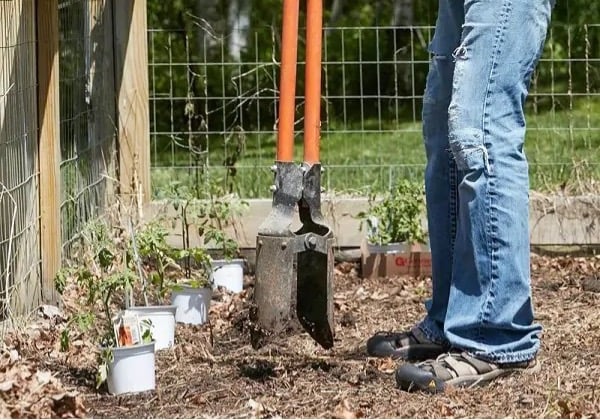
Source: The Family Handyman
Creating a planting hole using a posthole digger is as simple as dropping the blade, shutting the handles, and pushing out the soil. In just a matter of seconds, you will have an excellent planting hole that’s ready to use. A posthole digger digs a spot that is 6 to 8 inches broad. Even better, it can reach a depth of 8 to 10 inches. Which, by the way, is the perfect size for transplanting.
Keep Your Tools in a Sandbox
Do you wish to maintain the sharpness and cleanliness of your gardening tools? After lightly rubbing them with mineral oil, store them in a bucket of sand, aiding in sharpening and polishing them, ensuring that they remain in excellent shape.
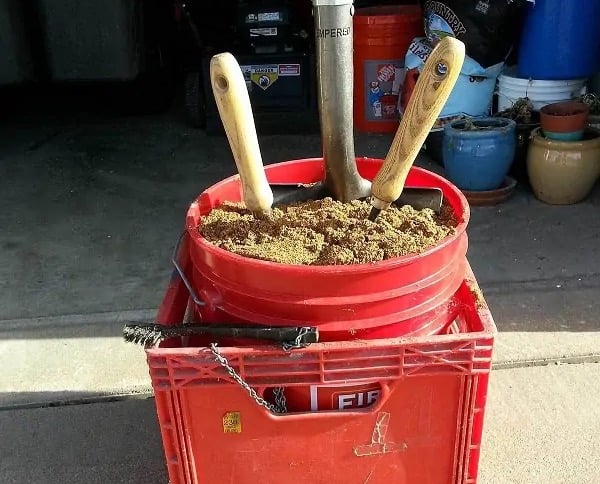
Source: The Family Handyman
Make sure the sand is somewhat wet in oil but not completely soaked. When returning a shovel to the shed, remove the most significant bits of soil and dip the tool’s head many times into the sand. Remove the sand from the tool and put it away.
Citrus Peels Make Perfect Planters
Use hollowed-out citrus peels to hold early seedlings if you need a small container. These are a great way to start your seedlings off right — and they’re easy to transplant. Just make sure the plants you use don’t mind being in an acidic environment!
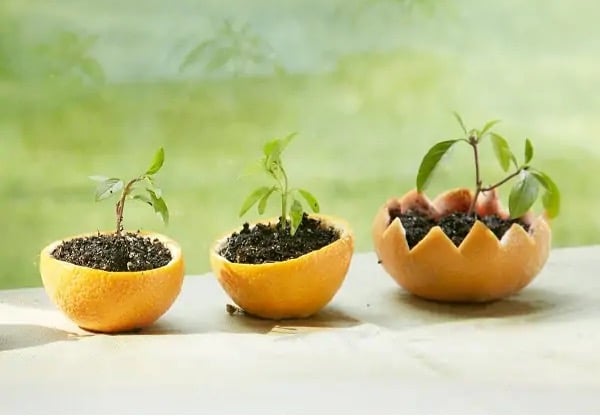
Source: The Family Handyman
You may build a tiny home for the next generation of sprouts by using the rind as the outside rim of a tiny “planter,” refreshed by the nutrients from the citrus peel. Then, once the nodes have outgrown their humble quarters, place them in your garden or raised bed for them to continue to thrive.
A Five-Gallon Bucket Can Store All Your Tools
In some instances, the essential tools are the most effective. For example, if you’re looking for something simple, a five-gallon bucket will hold all your equipment and supplies well.
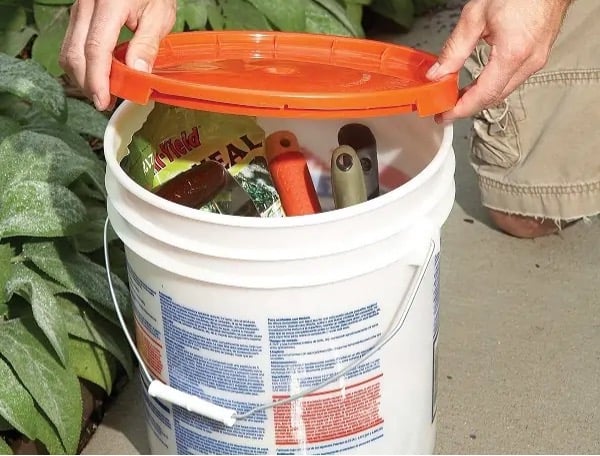
Source: The Family Handyman
Because it’s lightweight and compact, you can probably fit most, if not all, of your gardening tools within.
Coffee Filters Help Keep Soil from Seeping out of Pots
To prevent soil from getting all over your work surface, lay a coffee filter in the base of the pot and fill it with water. When the water drains away, it will prevent the soil from becoming a sloppy mess.
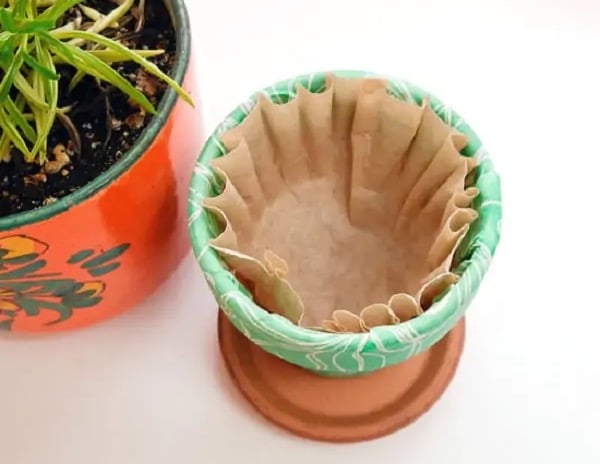
Source: Popsugar
A coffee filter placed at the base of your potted plant, in between the pot and the soil, will allow for ideal drainage while also keeping your soil looking neat and clean. There will no longer be a mudslide of earth erupting from the bottom of the pot.
Make a Self-Watering Planter out of Wine Bottles
Do you want to make it easier than ever before to take care of your plants? It is possible to do so by utilizing ordinary wine bottles.
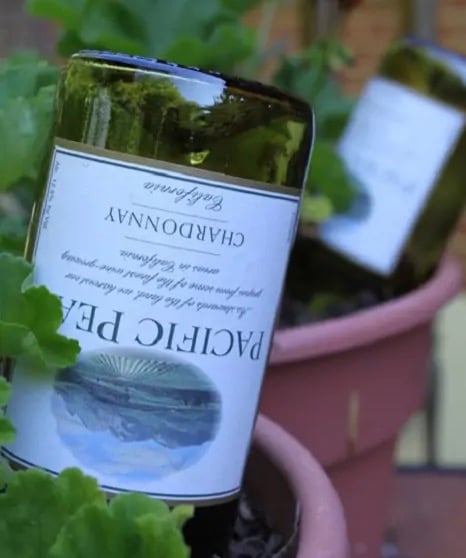
Source: The Greenists
Simply turn them upside down to create self-watering pots, which will save you a lot of time and effort. Rinse them thoroughly before using them.
A Jug of Water and Paper Towels Can Also Do the Trick
There are different approaches to creating self-watering pots. The following one is perfect for when you need to get out of town for a few days.
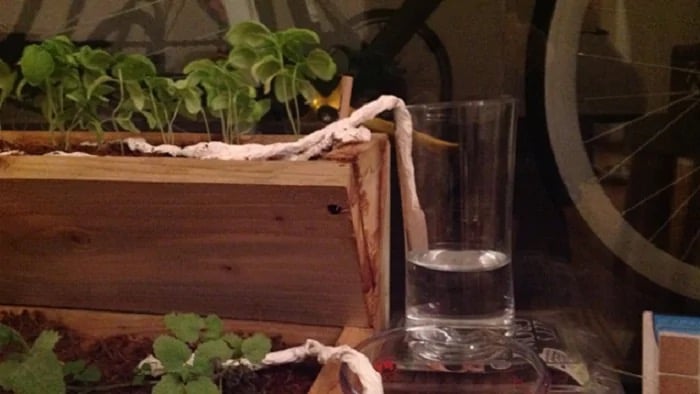
Source: Life Hacker
As the water progressively soaks up the paper towel, the plants use the water to take it into their roots and grow.
Egg Cartons as Seed Starters
Egg cartons are another excellent source of seed starting material. They’re compact, have a lot of storage space, and the cardboard ones are biodegradable, which is a plus. As a result, they’re an excellent choice for a garden!
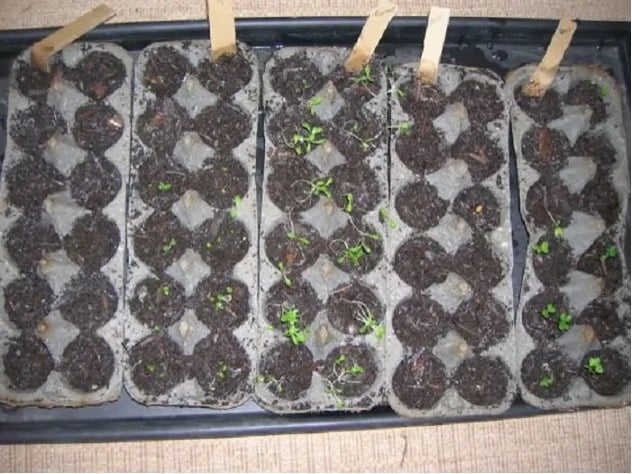
Source: Thrifty Jinxy
When it is time to plant them in the garden, cardboard egg cartons can be used to start a dozen seedlings. All you have to do is cut them apart to produce each one individually.
Hang Your Gardening Tools from a Mounted Pallet
Building up and taking advantage of your wall space is sometimes the most excellent method for organizing your tools.
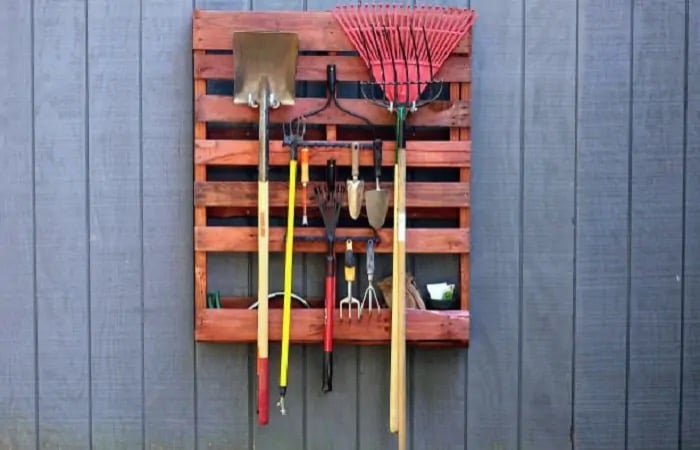
Source: fossickerbooks.com
All you’ll need is a basic pallet to build a super-effective tool holder right into the wall of your garage or gardening shed.
Honey Encourages Cuttings to Thrive
Believe it or not, honey is an excellent strategy to aid in the growth of your cuttings because it includes growth enzymes that aid in forming new roots.
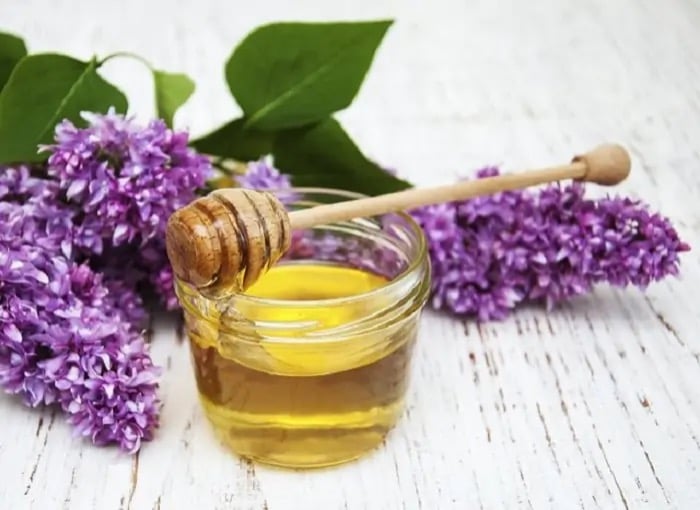
Source: gardeningviral.com
As a bonus, it possesses antibacterial characteristics, which may help to keep your plants healthy and disease-free.
Test the pH Level of Your Soil with Common Home Items
Here is a quick procedure on how to test your soil:
-Take one cup of soil from various locations in your garden and mix it.
-Separate the ingredients into two equal-sized containers.
-Examine the soil after adding one-half cup of vinegar to see whether there is any reaction. If your soil fizzes, your soil is likely alkaline, with a pH level of 7-8.
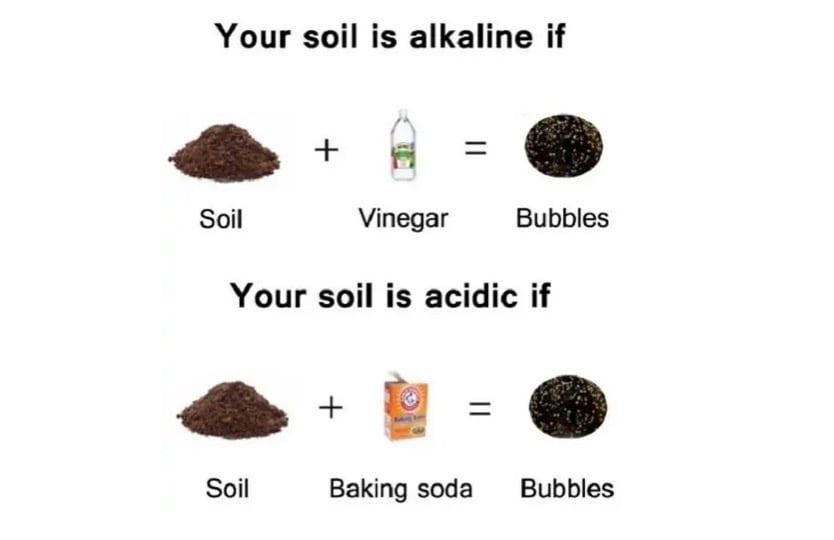
Source: gardeningtiming.com
-On the other hand, if it does not fizz, combine the soil in the second container with half a cup of baking soda and an equal amount of distilled water. If there is fizzing, your soil is most likely acidic, with a pH level between 5 and 6.
-If there is still no reaction, the pH of your soil is most likely acceptable.
Reuse Your K-Cups as Seed Starters
K-Cups can be a convenient method to get your daily caffeine fix, but they are not environmentally friendly practices. Fortunately, you can repurpose them in the garden as seed starters, and they’re lightweight enough to move around with ease.
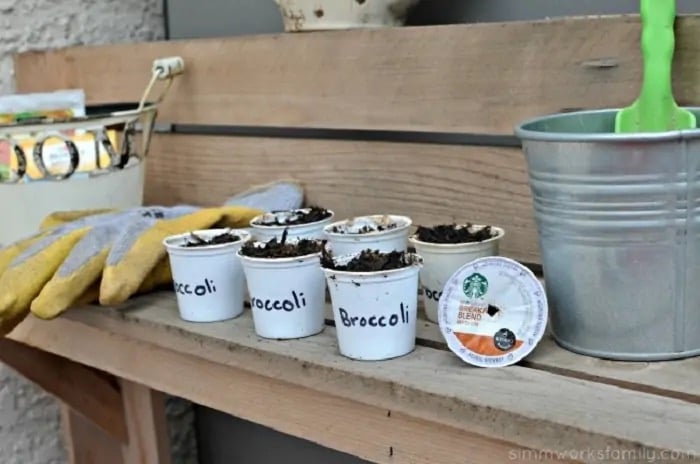
Source: Simmworks Family
To store the K-Cups, place them in a large, flat container — which may be of cardboard, plastic, aluminum, or whatever else you can find and cover with plastic wrap. You can put as many as you want in there. Next, take your preferred potting soil and place a scoop of it into each K-Cup. After that, it’s as simple as adding 2 or 3 seeds and covering them with soil!
DIY Drip Irrigation System
It is difficult to keep plants hydrated during the summer and requires a lot of tender loving care. This is where this price efficient trick comes in handy. This is meant to mimic a drip irrigation system and comes to great use!
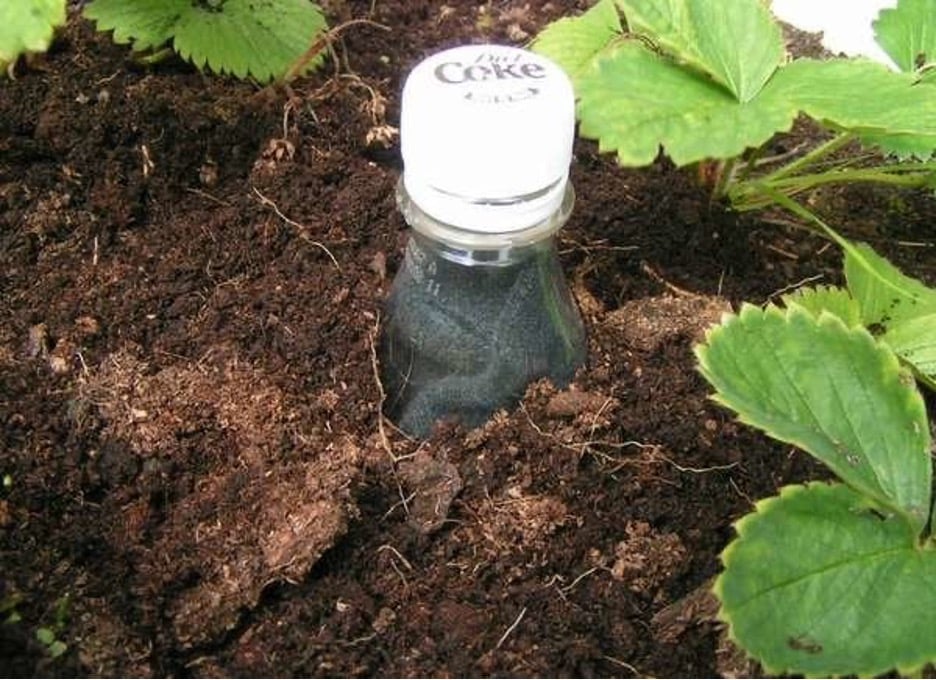
Source: bobvila.com
All you need is a plastic bottle and an orphan sock. Puncture holes around the sides and then stuff a sock into it. The fabric will absorb and retain the water, slowly distributing it to the surrounding plants. To refill the bottle, unscrew the cap and fill it with water when you’re ready.
Kill Your Grass with Cardboard
If you want to convert your planting bed into a low-maintenance planting bed but want to skip the pain of shoveling, this tip is for you! Simply cover the grass with cardboard and overlap the sheets as though they were shingles.
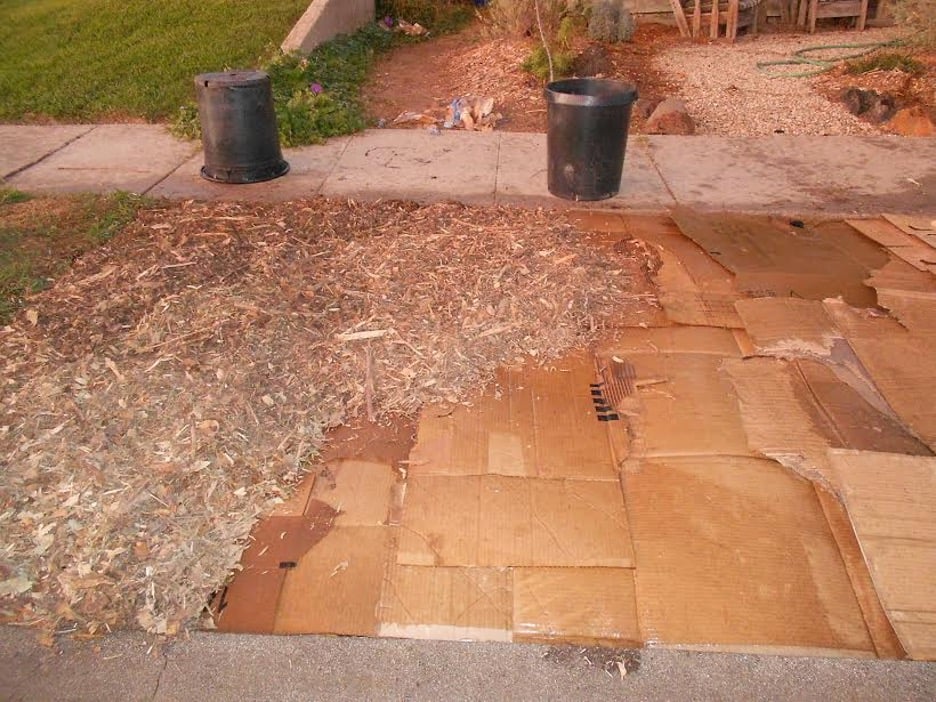
Source: TreePeople
Next, lay about four to six inches of compost or mulch over the cardboard and water the area until it is compacted. Wait for about two months and you’ll see that the ground is taking over the soil structure and nutrients necessary to sustain edible or decorative plantings of your choice.
Utilize Companion Gardening
Many types of plants benefit from their neighbors in various ways. For example, did you that strawberries are more flavorful when grown near thyme? Or that corn provides a natural trellis for bean plants.
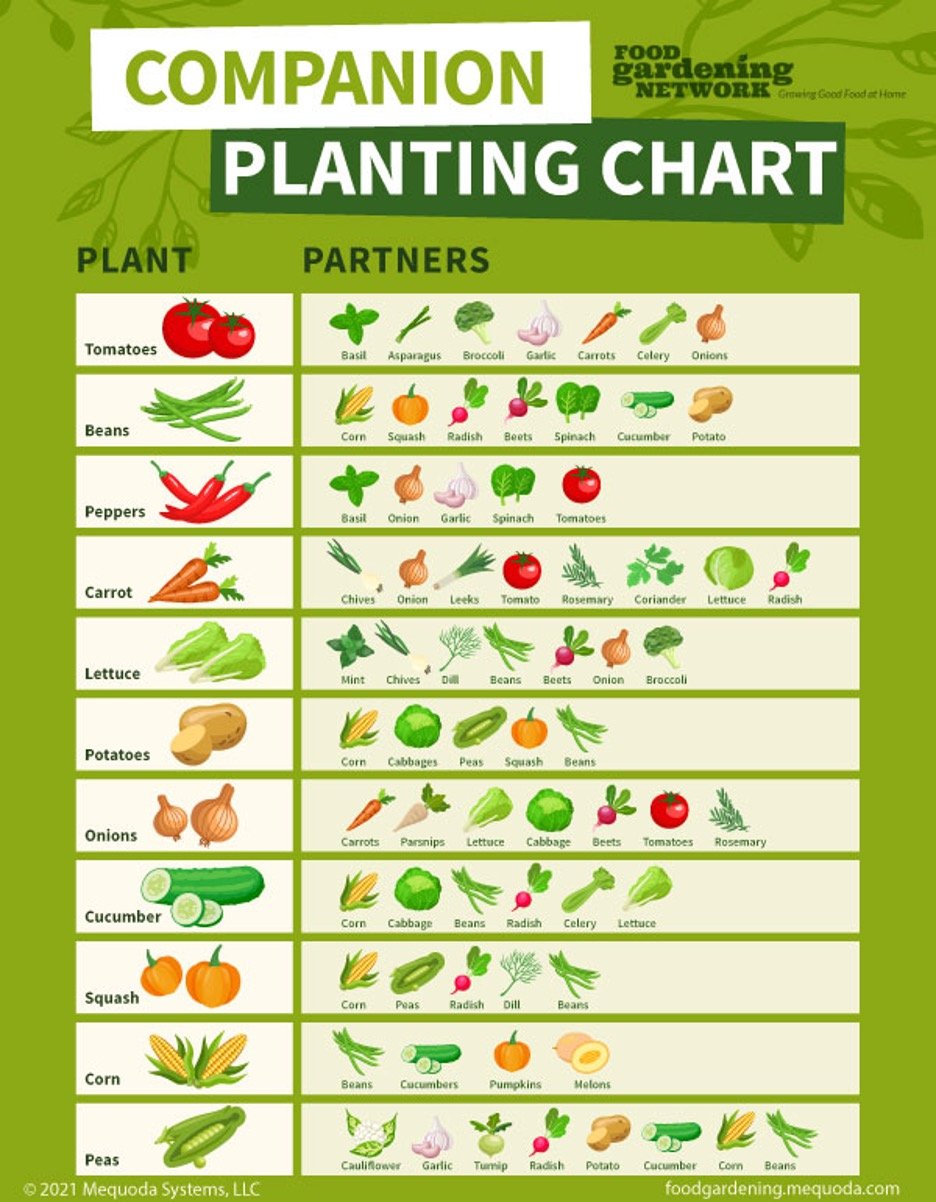
Source: Food Gardening Network
Another example is that planting a bright marigold border around squash plants discourages squash bugs from devouring your crop! Research the plants in your garden and see if they could use a companion.
Use Your Old Wine Corks
Rather than digging individual holes all along the bed of your garden, create a makeshift sower out of a garden rake and some old corks. Press the corks into the prong that they are the desired lengths for how deep you want the holes to be. Push the tool into the dirt.
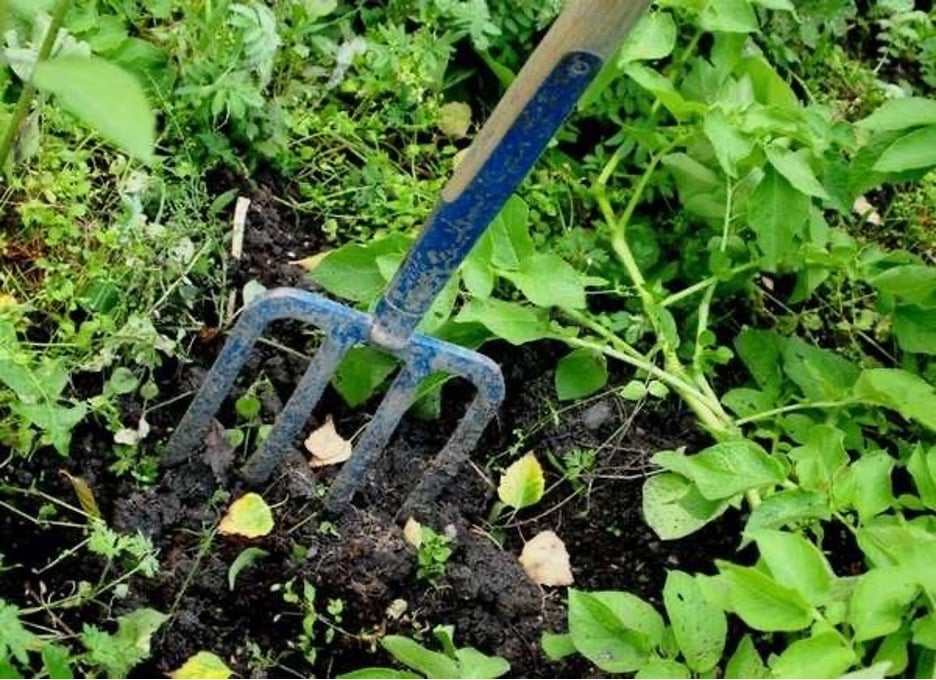
Source: Bob Vila
When you pull the tool back up you will be left with a neat row of holes ready for your seeds! It makes the process more streamlined and congruent.
Make Your Own Seed Tape
Seed tape is equal parts efficient and expensive. It makes it extremely convenient to put a lot of tiny seeds (such as carrots) down neatly and quickly, so it is worth investing some time in for a DIY!
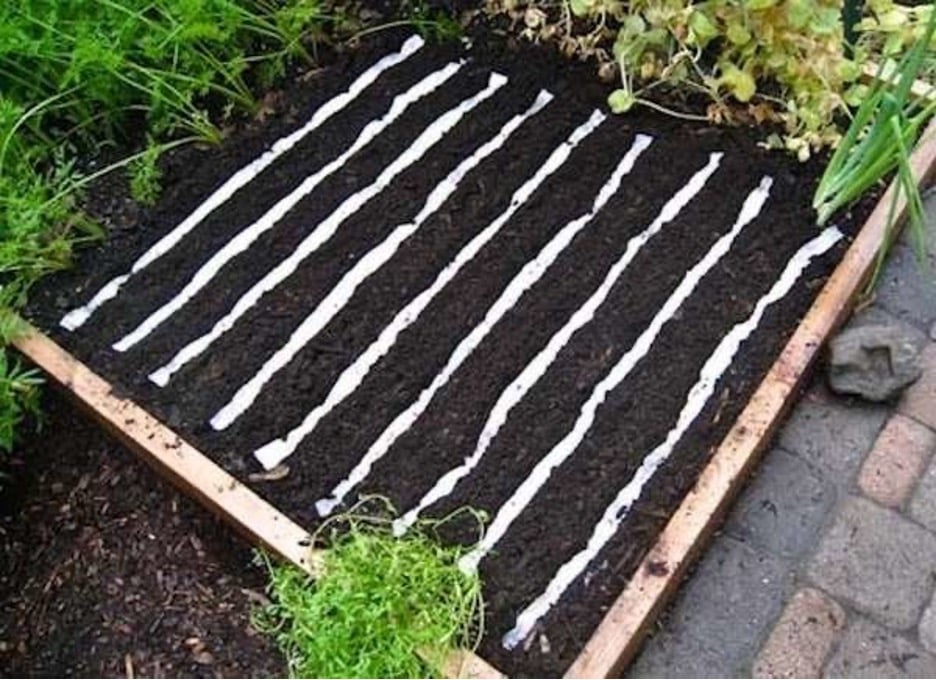
Source: bobvilla.com
Just roll out some toilet paper and spritz it with water from a spray bottle. Put your seeds in a line at the correct distance from each other and fold one third of the paper over the seeds and mist them again to make it stick. Fold the opposite third over and mist again. Roll it up in a toilet paper tube and store them until you’re ready to plant.
Reuse Your Water
Drought and water shortages are a reality, and this tip is for the frugal and the environmentally inclined (which I hope is all of us). To use your resources wisely, reuse water wherever you can. Some good examples of when you can easily reuse would be after boiling your eggs or rinsing your veggies.
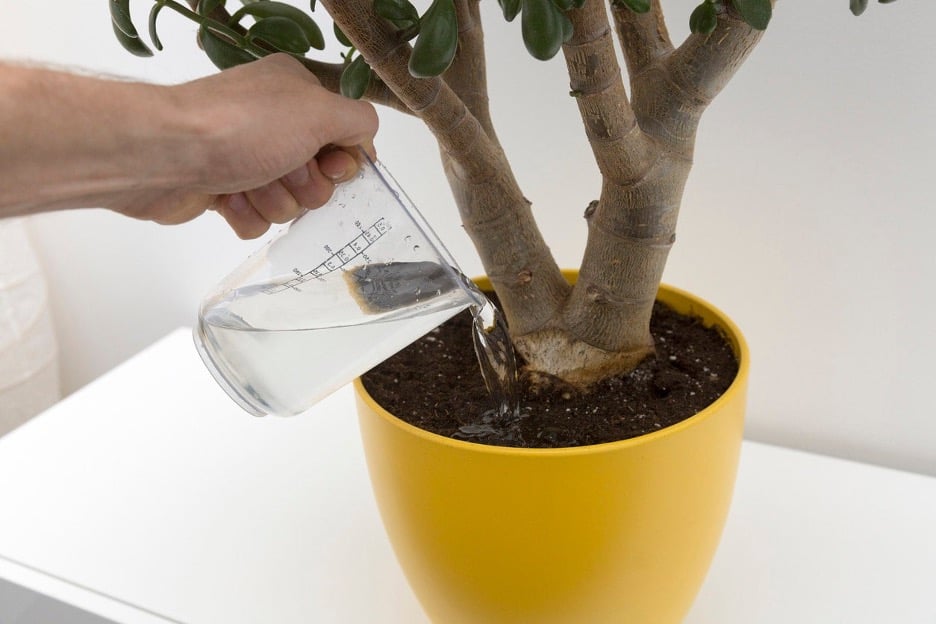
Source: Bob Vila
Use that water for your outdoor plants and you’ve done your water bill and the globe a service. Of course, let the water cool to room temperature before dispersing the water on your plants.
Create Your Own Insecticidal Soap
For those who don’t know, insecticidal soap is a non-toxic solution for spraying plants that are pestered by well…pests. To make your own, mix 1-2 drops of lemon essential oil, 1 tablespoon of pure liquid soap (such as castile), per 1 quart of water, and mix into a spray bottle.
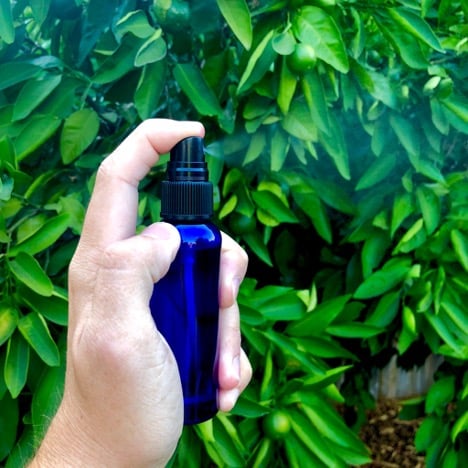
Source: The Air Plant Hub
Be sure to avoid dishwashing liquid, as the additives can be harmful to plants and ineffective on insects. This will keep the bugs away!
Propagate Your Plants
There are many plants that you don’t need to buy if you know how to propagate. Simply take a cutting or two and root the plant into your garden and wait for it to come to fruition! Plants that are perfect for propagating are jade, lavender, chrysanthemum, and butterfly bush to name a few.
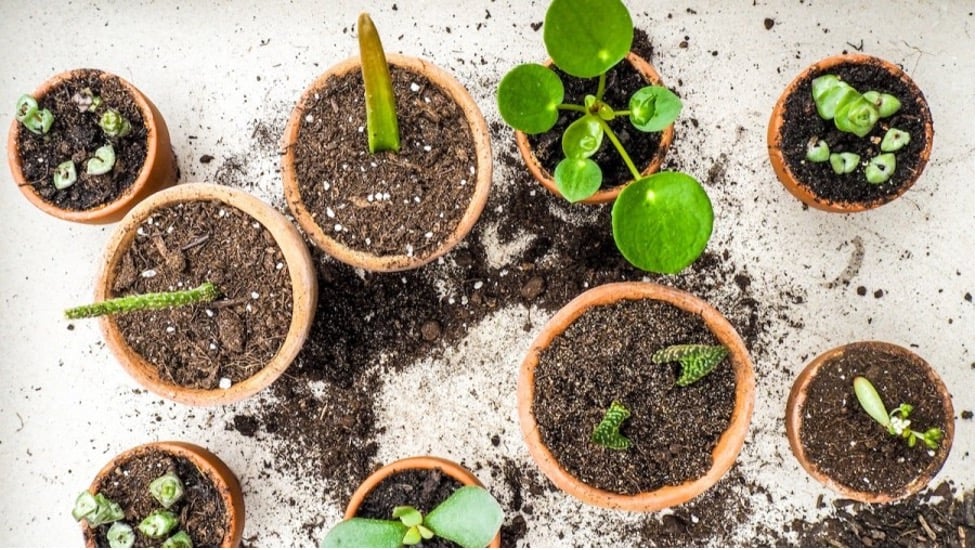
Source: MasterClass
To do so, snip a six-to-eight-inch piece of green growth and remove all but a few leaves at the top. Stick this into the ground or a pot of soil. Water accordingly, the plant should be able to take root in a couple of weeks and by the following season be well established.
Aerate Plant Pots Using an Old Can
Empty cans in the bottom of planters save you money on soil and allow air to circulate through the pots. This way, your plants will get more oxygen, as well as the moisture that the cans hold.
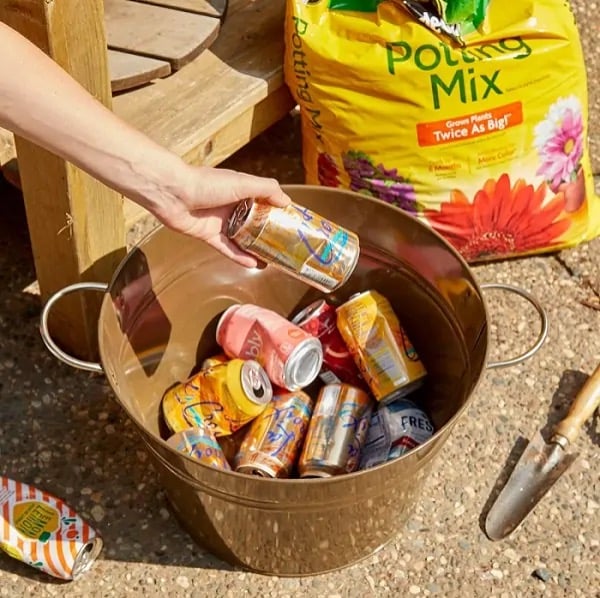
Source: The Family Handyman
Empty aluminum cans will save money on potting mix while also making huge containers lighter. Place the crushed aluminum cans in the pot’s bottom and cover them with landscape fabric or screen wire.
Compost Your Seed Pots
When seeding indoors skip the ornamental setup and go for these free and completely compostable seed pots. All you have to do is cut slits in one end of the toilet paper roll and fold the ends together to create a closed base.
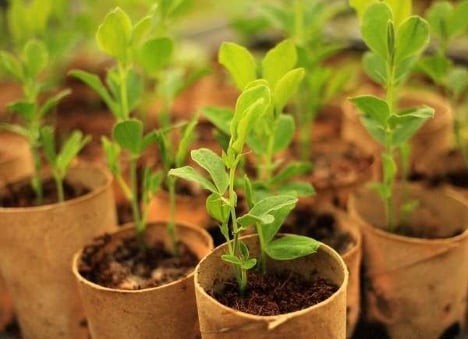
Source: Bob Vila
Fill the tubes with soil, seeds, and water occasionally until your seeds have sprouted. You’re your seeding is strong enough for the outdoors, fold the bottom flaps aside to let the roots pass through and then you can plant the entire roll directly into the ground!
Create a Natural Trellis
Many vegetable plants like beans, tomatoes, and cucumbers do better with support to help them grow. To create a natural trellis, you can use pruned limbs of trees or other found materials (saplings is another option).
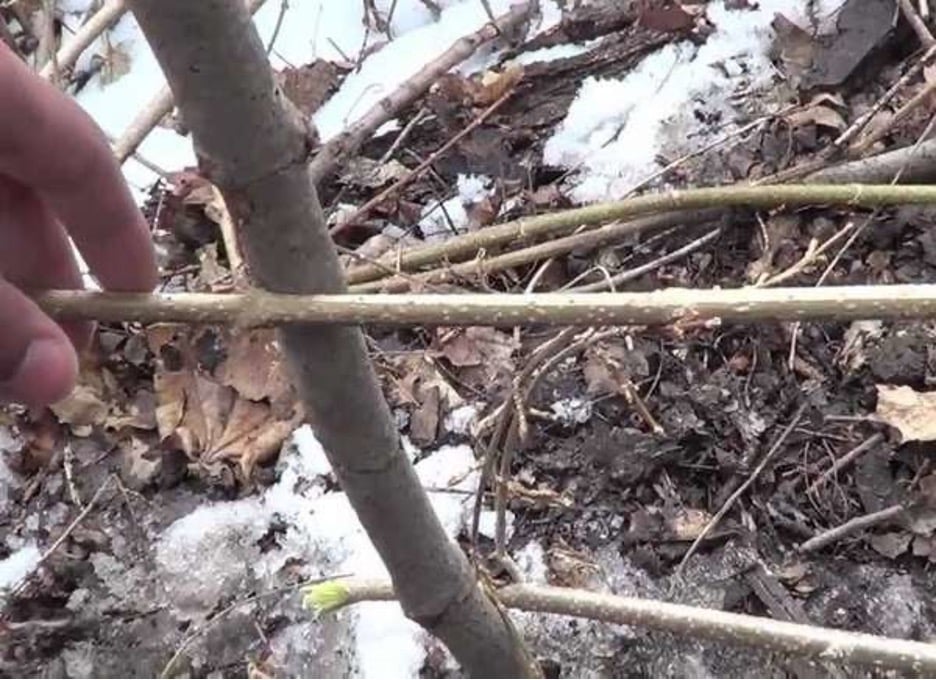
Source: bobvila.com
Place the materials out in a grid, fan, or ladder shape on the ground. Tie them together where they cross with sturdy twine. This will decrease your pile of yard waste and your plants will thank you!
